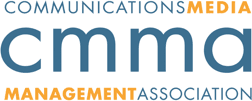In the following Q&A with workplace solutions experts Dusty Duistermars, you’ll learn about changes in the workplace: what’s driving those changes and how companies can adapt. Dusty Duistermars is the senior vice president of digital solutions for JLL, which specializes in professional services in real estate.
Interview With Dusty Duistermars
Q: What is the flexible workplace and what makes it so attractive?
Duistermars: Technology — specifically, mobility — has been impacting where and how we work for over two decades. The flexible workplace is simply space that allows employees to work in non-traditional ways, including remote work, co-working and desk sharing/hoteling. Flex space is typically higher-tech enabled, allowing employees to reserve space based on the type of activity they’re performing and only for a limited duration. These activity-based working spaces include a variety of supportive technologies like interactive video conferencing and wireless sharing of content that can be annotated in real time by participants.
We can trace this to a couple of factors: millennials and technology. Millennials have grown up with the technology that allows them to be in touch with one another on a 24/7 basis. So it’s no surprise that they expect the same of their work environment.
Q: Are we at a point where people can say “no thanks” to a company that doesn’t offer them the experience and resources they need?
Duistermars: Absolutely. Due to the overall talent shortages, employees have options. They could also go freelance; we’ll see the gig economy double in the next five years. If employers are not leveraging their space as a differentiator to both retain and attract employees, they will ultimately fail.
Q: What does this shift look like from the company side?
Duistermars: It’s no longer about occupancy, it’s about utilization and productivity.
Q: So instead of permanent assignments to space, assignments to real-time usage?
Duistermars: Right. You might have 200 or more people assigned to a designated area (typically referred to as a ‘neighborhood’) that only has 100 desks, and that will work because they’re not there at the same time.
Q: To do this, don’t you need a culture that welcomes and supports people working in and out of the office?
Duistermars: Yes, and you can build that culture by making collaboration technology systems and spaces available to them. Focus groups, design partners, and IT will help figure out how flexible to go in those areas. They’ll also account for work types, as on-site engineers will require different types of space than say the national sales team who’s rarely at ‘their’ desk. The idea is that more personalization and flexibility add to the employee experience.
Q: Where are companies at with the move to flexible workplaces?
Duistermars: First off, this doesn’t happen overnight. There are multiple steps, including detailed change management and communication strategies that are needed to be successful. That being said, we see, on average, about 5-10% of client portfolios being flexible. It’ll grow to roughly 30% within the next five years.
Q: What will account for that increase?
Duistermars: Talent is driving a lot of this. Millennials want the flexibility. It also a much better cost model for employers. A dedicated space can cost employers on average, $10,000 annually. That’s a lot of money for someone who’s only in their seat about half the time. Thus, desk sharing makes business sense too.
Q: Let’s shift perspective to the IT side. As more spaces become flexible, how does that affect their management?
Duistermars: It makes managing those spaces a challenge if you don’t have the right tools in place. Some platforms are capable of managing numerous aspects of the ecosystem. Or if you’re using a point solution/best in class model, you’ll want to make certain that it’s integrated properly and that you’re getting the right data (typically utilization) out of each system and able to analyze holistically.
Q: How is JLL helping companies that need employees on site?
Duistermars: That’s a great question. Allow me to break this down: First, we involve our consulting and labor analytics group to make certain the company is choosing the right markets/locations based on the type of talent that they need.
From there, we help them create great spaces where employees want to be. We also lean on partners like AVI-SPL to make sure the experience from desk to meeting spaces is frictionless.
Q: What advice do you have for companies that haven’t yet bought into the idea of workplace transformation?
Duistermars: The only constant is change. If you’re not getting ahead of this by focusing on your people and your technology, you won’t need to worry about any of this in five years; your company won’t exist.
To view our Partner blog, click here

 As the term suggests, “ADA compliance” applies to the sum of the combined systems—not just its individual components—and the ways in which it is installed/operated complies with the ADA’s requirements. For example, under ADA rules that govern “Protruding Objects” (ADA Sections 204 and 307), a wall-mounted flat panel display cannot protrude more than four inches from that wall. There’s a good reason for this: An object protruding more than four inches could be a serious obstacle for wheelchair users and people with visual disabilities. While a two-inch-deep mount and 2.25-inch-deep display are ADA compliant on their own, when mounted together, they exceed the depth limit.
As the term suggests, “ADA compliance” applies to the sum of the combined systems—not just its individual components—and the ways in which it is installed/operated complies with the ADA’s requirements. For example, under ADA rules that govern “Protruding Objects” (ADA Sections 204 and 307), a wall-mounted flat panel display cannot protrude more than four inches from that wall. There’s a good reason for this: An object protruding more than four inches could be a serious obstacle for wheelchair users and people with visual disabilities. While a two-inch-deep mount and 2.25-inch-deep display are ADA compliant on their own, when mounted together, they exceed the depth limit.